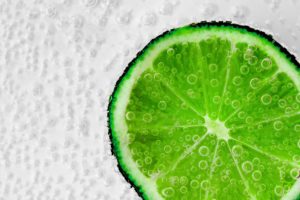
Thomas Barregren
Case: Switsbake makes sugar-free muffins with Eureba
There are tough requirements to market something as sugar-free. But Switsbake’s sugar-free vanilla muffins meet those requirements thanks to EUREBA®. In this interview, Swissbakes’ product manager talks about his experience with Eureba and plans for the future.
Read the full article »Nutri-Score – everything you need to know
The European Commission has long sought an EU-wide front-of-package label to help consumers find healthier food options. The hottest candidate is the Nutri-Score.
Read the full article »Sweet from nature – the sweet jouney (part 5 of 6)
To reduce sugar and calories, while maintaining good taste, sweeteners with a lot of sweetness and few or no calories are required. In the fifth of six articles about our sweetening journey, it’s time for sweeteners of natural origin.
Read the full article »Chemically sweet – the sweet journey (part 4 of 6)
Regular sugar cannot be replaced with fructose, maltitol, glucose syrup and other bulk sweeteners if the calories are to be reduced. The solution is sweetener that gives a lot of sweetness for little or no calories. In the fourth of six articles from our sweet journey, we look at artificial sweeteners.
Read the full article »Monster sugars — The Sweetening Journey (part 3 of 6)
In part 3 of the sweetening journey, we have come to the ‘monster sugars’. Here we find, among others, invert sugar, isoglucose and glucose syrup. These are sugar-like products that are rich in calories and have a high GI. From a health perspective, there are definitely better alternatives.
Read the full article »Sweet alcohols – The Sweetening Journey (part 2 of 6)
Our sweetening journey continues! In the second part, we take a closer look at sugar alcohols, such as maltitol and erythritol. What exactly are sugar alcohols and do they have any disadvantages?
Read the full article »E-sensory for food and beverage producers
What is e-sensory? And why should you care? If you’re wondering, you should read this article, We will try to answer the two questions in this article.
Read the full article »How stevia extract is produced from stevia leaf
Stevia extract is a mixture of steviol glycosides extracted from the leaves of stevia plants. In this article, we take a closer look at how stevia refineries extract and purify fractions of steviol glycosides and then mix them into stevia extracts.
Read the full article »Sweetened fibres under the microscope
Food and beverage producers’ dilemma is consumers desire to both remove sugar and retain its sweetness and mouthfeel. In theory, the solution is to replace sugar with ingredients with less calories but the same sweetness and mouthfeel. Sweetened fibres is such a solution. It is a new kind of bulk sweetener that is as sweet as regular sugar, contributes to the product’s taste and mouthfeel as regular sugar, has the same volume and weight as regular sugar, can be transported, stored and used as regular sugar, while having fewer calories than regular sugar, and have less impact on the level of blood sugar than regular sugar. In this article, we take a closer look (literally) on sweetened fibres, and answer some questions: What is sweetened fibres? What are they made of? And how does it work?
Read the full article »









